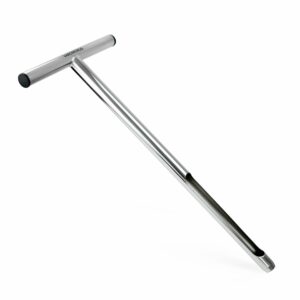The Importance of Sampling for Commercial Poultry Producers
go.ncsu.edu/readext?1064136
en Español / em Português
El inglés es el idioma de control de esta página. En la medida en que haya algún conflicto entre la traducción al inglés y la traducción, el inglés prevalece.
Al hacer clic en el enlace de traducción se activa un servicio de traducción gratuito para convertir la página al español. Al igual que con cualquier traducción por Internet, la conversión no es sensible al contexto y puede que no traduzca el texto en su significado original. NC State Extension no garantiza la exactitud del texto traducido. Por favor, tenga en cuenta que algunas aplicaciones y/o servicios pueden no funcionar como se espera cuando se traducen.
Português
Inglês é o idioma de controle desta página. Na medida que haja algum conflito entre o texto original em Inglês e a tradução, o Inglês prevalece.
Ao clicar no link de tradução, um serviço gratuito de tradução será ativado para converter a página para o Português. Como em qualquer tradução pela internet, a conversão não é sensivel ao contexto e pode não ocorrer a tradução para o significado orginal. O serviço de Extensão da Carolina do Norte (NC State Extension) não garante a exatidão do texto traduzido. Por favor, observe que algumas funções ou serviços podem não funcionar como esperado após a tradução.
English
English is the controlling language of this page. To the extent there is any conflict between the English text and the translation, English controls.
Clicking on the translation link activates a free translation service to convert the page to Spanish. As with any Internet translation, the conversion is not context-sensitive and may not translate the text to its original meaning. NC State Extension does not guarantee the accuracy of the translated text. Please note that some applications and/or services may not function as expected when translated.
Collapse ▲Commercial poultry producers have a lot of recordkeeping to keep up with and sampling records are a big part of their routine. Understanding when and how producers should sample is key to getting an accurate sample analysis back from the laboratory.
Litter sampling is required within 60 days of a litter application, meaning the producer has a 120-day window to sample. When sampling stockpiled litter or a dry stack, a representative sample should be collected by taking core samples at least 18” deep in several different locations on the stack. If the litter has been stored for a while and crusted over, remove the top 3-4 inches before taking core samples, then mix the samples in a plastic bucket and place about a quart of material in a clean plastic bag and ship the sample to the laboratory in a suitable container to be analyzed.
Sampling in-house litter should be done by inspecting the house and estimating the percentage of floor space used for different activities such as feeding or watering. Then take core sections of litter in those defined areas to get a representative sample of the house. Mix samples well in a plastic bucket. Put one quart of material in a clean plastic bag and ship it to the laboratory in a suitable container.
For both stockpiled litter (dry stack) and in-house litter sampling, the accompanying paperwork should be properly filled out, including an email address. Also, if you are using a third-party applicator, it is your responsibility as the producer to provide the waste analysis to the third party applicator, as it will be used in determining proper litter application rates. Be sure to check fees before you send your samples off as they are subject to change. A few tips for proper sampling: always submit representative samples to get an accurate depiction of your waste, keep your samples cool; if you are going to store them for more than one day, they need to be refrigerated, and do not put the paperwork inside the sample containers.
Soil sampling should be done at least every three years for all fields receiving litter. There is accompanying paperwork for soil samples as well. Be sure to check peak season fees. To properly take a soil sample, you should first pick up a soil sample kit from your local Cooperative Extension office. Agents there will be able to answer any questions you may have on how to properly take a soil sample. First, be sure to use iron or stainless-steel tools and only sample dry areas of 10 acres or less (per box). Avoid combining soils that may have different treatment histories. You should collect 15-20 cores at the appropriate depths: 0-8” for plowed soils and 0-4” for no-till soils. Use a plastic bucket to mix the cores well and fill the soil sample box to the appropriate line. Be sure not to put soil samples in a plastic bag. Ship to the laboratory in a suitable container.
You can find all these forms at your local Cooperative Extension office. If you have commercial poultry questions, feel free to contact me at Margaret_Ross@ncsu.edu.




